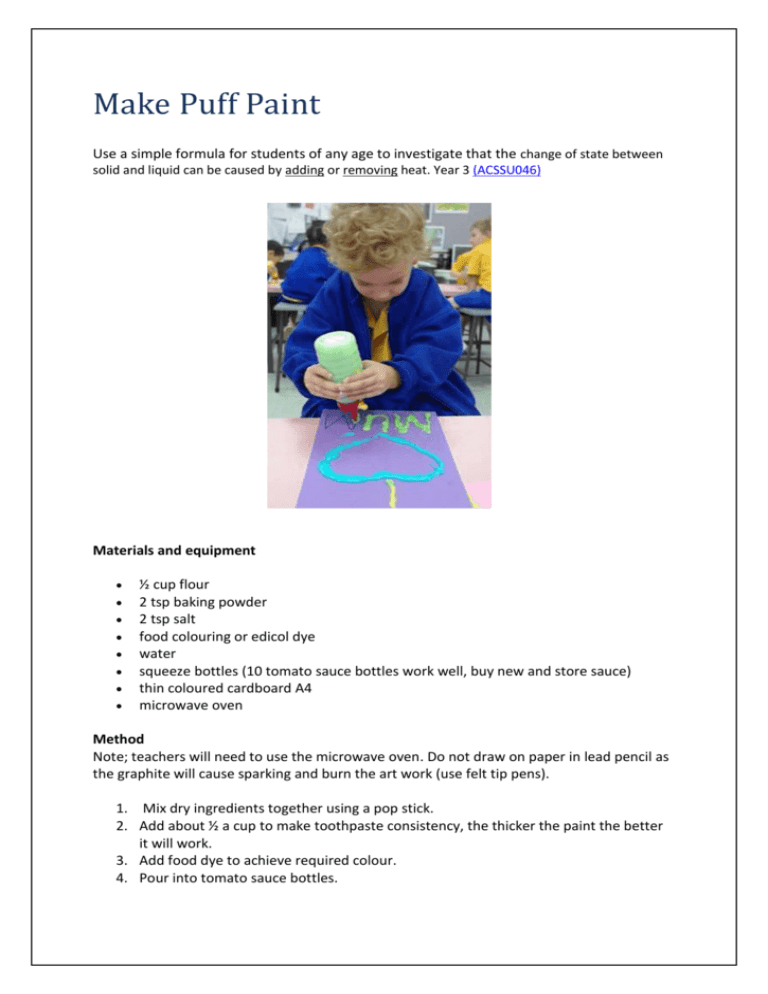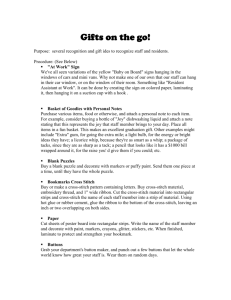Make Puff Paint
advertisement

Make Puff Paint Use a simple formula for students of any age to investigate that the change of state between solid and liquid can be caused by adding or removing heat. Year 3 (ACSSU046) Materials and equipment ½ cup flour 2 tsp baking powder 2 tsp salt food colouring or edicol dye water squeeze bottles (10 tomato sauce bottles work well, buy new and store sauce) thin coloured cardboard A4 microwave oven Method Note; teachers will need to use the microwave oven. Do not draw on paper in lead pencil as the graphite will cause sparking and burn the art work (use felt tip pens). 1. Mix dry ingredients together using a pop stick. 2. Add about ½ a cup to make toothpaste consistency, the thicker the paint the better it will work. 3. Add food dye to achieve required colour. 4. Pour into tomato sauce bottles. 5. Gently squeeze to start painting. Tip: Don’t work too close to the edge of the paper, roughly leave a 2cm border. Try not to make puddles of paint, they are difficult to dry. 6. Place the cardboard in the microwave for 20 seconds. Check to see if the paint is dry and puffy. If you have damp spots allow the paint to cool for a minute and repeat heating for 10 seconds What's happening? When you heat up the paint, the baking soda reacts with the water to make carbon dioxide. Bubbles of carbon dioxide make the paint puffy. You will see little dots in the paint. This is where bubbles of carbon dioxide have escaped. Heating up the paint makes it dry out, so you can put your picture on the wall. Adapted from Tinkerlab through Planet Science http://www.johnnosscience.com
![[Agency] recognizes the hazards of lead](http://s3.studylib.net/store/data/007301017_1-adfa0391c2b089b3fd379ee34c4ce940-300x300.png)







